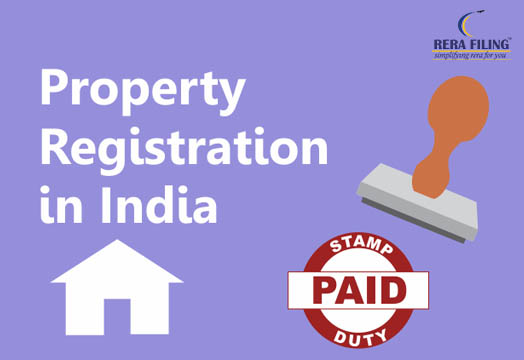
- General
- Author: Shreya Uppal
Highlights
-
The legalities and paperwork can even confuse the smartest of the home buyers. For a hassle-free process one must take an expert advice in relation to this.
-
It enables the new owner to get the property recorded in his name in the Land Revenue Department as a consequence of which the government can collect the property tax from the true owner.
As per section 17 of the Registration Act, 1908, all transactions involving the sale of an immovable property for a value exceeding Rs.100, should be registered. This means that all the transactions for sale of immovable property have to be registered. Property Registration is an integral part of the home buying process. Of all the steps involved in buying a property, registration is the most complex in nature. The legalities and paperwork can even confuse the smartest of the home buyers. For a hassle-free process one must take an expert advice in relation to this.
Process of registering a property
Registration of documents is mandatory under section 17 of the Registration Act, 1908. If the required documents are not duly registered, the law neither recognises the unregistered owners nor provides them any right over the property. Process has been described below:
1. Verify for encumbrances at the office of Sub-Registrar of Assurances
This can be done by taking a look at the title deed or ownership status of the property such as mortgages or liens. One should verify that the title deed is registered in the name of the person who is selling the property and all the documents are in place for the registration of the same. While investigating this, you must check the following aspects:
(a) The legal ownership document must be in the name of the owner. This document is issued by the Revenue Record Department and bears the seal of the Tehsildar. A Tehsildar is a gazetted officer in charge of obtaining taxation from a tehsil (an administrative division).
(b) Records for the last 30 years must be checked to make sure that the property has no mortgage or other encumbrances as on the date of purchase.
(c) Ensure that the property is transferable and heritable and the transferor/seller is authorized to sell it.
(d) Make sure that all dues related to payment of taxes, electricity bills and water bills have been paid till the date of purchase.
2. Preparation of the final deed by the buyer’s lawyer
The lawyer of the buyer is required to prepare the final sale deed of the property. The document is embossed on green legal paper leaving the date and place blank and then submitted for stamping.
3. Payment of stamp duty
The buyer has to pay the stamp duty at the designated bank or authorized collection centre of the Stock Holding Corporation of India for stamping of the Sale Deed. The charges vary from state to state but are usually around 5 percent of the true market value of the property. This value is calculated basis the rates of property published in the Ready reckoner issued by the Government of India annually. Once the payment is done, the bank issues a receipt and marks the first page of the printed Sale Deed with “stamp duty received”.
4. Final deed Execution
Execution of final deed requires the presence of the buyer, seller and two witnesses at the office of the Sub-Registrar of Assurances within whose jurisdiction the property is located.
(a) The registration fee is usually 1% of the transaction value, subject to maximum of Rs. 30,000.
(b) The registration fee is to be submitted with the cashier against a receipt after which documents are presented before the Sub-Registrar for scrutiny purposes after which completion of which the seller hands over the physical possession to the buyer.
(c) The documents which are presented before the Sub-registrar are:
1. Copy of the PAN cards of seller and the buyer along with sale deed,
2. Two passport size photographs of buyer, seller and witnesses,
3. Photo identity proof of buyer, seller and the witnesses,
4. Latest property registrar card to indicate that the property does not belong to the Government.
5. Mutation of Title Deed
Mutation refers to the change in title ownership from one person to another when a property is sold or transferred. It enables the new owner to get the property recorded in his name in the Land Revenue Department as a consequence of which the government can collect the property tax from the true owner.
Application for mutation is made at the office of City Survey and Land Records Department. The authorized signatory is required to submit the duly signed application form along with the affidavit, indemnity bond and a notarized copy of the registered Sale Deed. After assessing the request for mutation, City Survey and Land Records Department decides the value of tax on the property and finally issues a letter of mutation in favour of the buyer.
Copyright © 2026 RERA Filing. All rights reserved.

 Rera Act
Rera Act
 Maharashtra
Maharashtra
 Karnataka
Karnataka
 Telangana
Telangana
 Andhra Pradesh
Andhra Pradesh
 Delhi
Delhi
 Uttar Pradesh
Uttar Pradesh
 Haryana
Haryana
 Gujarat
Gujarat
 Bihar
Bihar









